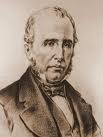2.1.3 The poetry of Manuel María Pérez y Ramírez (1772 – 1851)

Manuel María Pérez y Ramírez was very close to Manuel de Zequeira and Manuel Justo de Rubalcava, both military men. He professed unfaltering admiration for the former, which he expressed in his lyrics. He even considered his lyre “poor and inadequate” for singing the praises of his fellow countryman’s. He also took it upon himself to publish Rubalcava’s poem, “Death of Judas,” after the author’s death.
Humility was one of Pérez and Ramírez’s most outstanding characteristics, closely linked to which is the ethical and religious sense expressed in his works, his praise of Christian poverty, and the devotion he placed in the feeling of friendship.
His best-known poem is entitled “A Reconciled Friend”:
“By some unforeseen accident
A crystal glass often breaks
It involves welding with thin varnish
And finally we manage to see him stuck:
But no matter how much you rush your care
The rarest and most unusual ingenuity,
Leaving it without a signal is madness,
There are always signs of bankruptcy.
This is a very tough friendship;
The friendship that was beautiful is broken,
Time welds it with its great wisdom;
It is true that friendship is seen as a whole
But with the sign of breaking
“It can never be the same as it was before.”
He was one of the most cultured men of his time and is said to have founded around eleven periodicals between 1810 and 1824; however, his poetic work was not collected in a single volume, but rather in fragments that appeared sporadically, many of which have not survived to posterity.
He is known to have written a drama titled “Marco Curcio,” of which there is no record today. He also wrote sacramental plays, which were set to music by the prominent composer Esteban Salas.
Poetry was one of several cultural and scientific lines that he developed, and he was even a professor of Félix Varela. Perhaps this broad outlook influenced a certain prose-like tone in his lyrical work, which nevertheless seems to have had a certain quality worthy of note.
His work was not very prolific, and is even absent from the dictionary of Cuban literature; but the trio he forms with the two poets cited above—Manuel de Zequeira and Manuel Justo de Rubalcava—constitutes a highly interesting aspect for understanding this period of Cuban poetry and the manifestations of neoclassicism.








